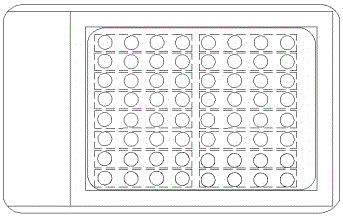Method for detecting heterogeneity in triple-negative breast cancer
A technology for triple-negative breast cancer and heterogeneity, which is applied in the field of quantitative detection of intratumoral heterogeneity of breast cancer patients and the detection of intratumoral heterogeneity of triple-negative breast cancer, which can solve the problems of time cost, economic cost, human cost, large It is difficult to achieve widespread promotion and popularization, and there is no uniform standard for tumor prognosis, etc., to achieve the effects of easy large-scale promotion, reduced dependence and investment costs, and reduced experimental costs
- Summary
- Abstract
- Description
- Claims
- Application Information
AI Technical Summary
Problems solved by technology
Method used
Image
Examples
Embodiment Construction
[0042] A method for detecting intratumoral heterogeneity of triple-negative breast cancer of the present invention is characterized in that it comprises the following steps:
[0043] 1. Fabrication of a chip for detection of intratumoral heterogeneity in triple-negative breast cancer:
[0044] 1. Make acceptor wax blocks:
[0045] (1) Under a paraffin embedding machine, use a lead mold to make a acceptor wax block for a 25.0mm×23.8mm×5.0mm chip.
[0046] (2) A tissue sampling needle with a diameter of 1.0 mm was used to punch holes in the recipient wax block with a depth of about 0.4 cm, and the distance between every two adjacent tissue cores was about 2.0 mm, and a microarray of 8 rows×8 columns was prepared.
[0047] 2. Donor wax block:
[0048](1) The paraffin wax specimens of cancer tissues and paired normal tissues of 16 triple-negative breast cancer patients required to be tested were collected as donor wax blocks. Donor blocks are derived from routine archival block...
PUM
 Login to View More
Login to View More Abstract
Description
Claims
Application Information
 Login to View More
Login to View More - R&D
- Intellectual Property
- Life Sciences
- Materials
- Tech Scout
- Unparalleled Data Quality
- Higher Quality Content
- 60% Fewer Hallucinations
Browse by: Latest US Patents, China's latest patents, Technical Efficacy Thesaurus, Application Domain, Technology Topic, Popular Technical Reports.
© 2025 PatSnap. All rights reserved.Legal|Privacy policy|Modern Slavery Act Transparency Statement|Sitemap|About US| Contact US: help@patsnap.com

